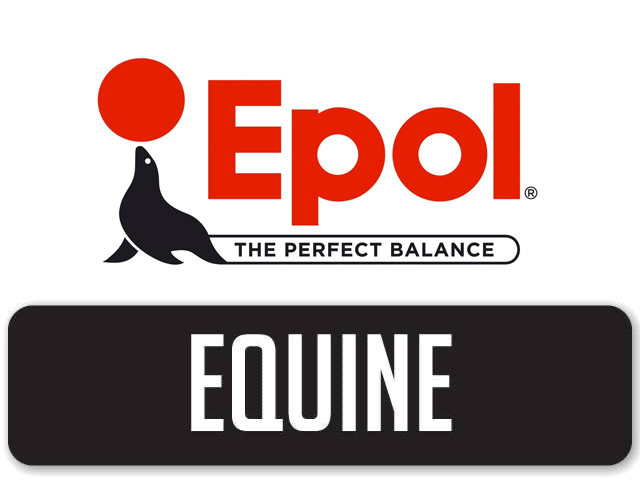In the final part of our feed label series we look at Crude fibre, Calcium and Phosphorus, as well as some details a feed label won’t divulge.
Crude Fibre
The word “crude”, in the case of fibre, comprises both the digestible and indigestible fibre in the feed. The digestible portion of the fibre provides many nutrients, while the indigestible portion does not, but in correct amounts is helpful in maintaining good intestinal health. Generally speaking, the higher the fibre content of the feed, the lower the energy level will be. Unfortunately, the crude fibre percentage on the bag tag is not an indicator of the fibre quality per se. Legally, only the maximum fibre level needs to be specified. Feed companies should, however, specify both minimum and maximum levels of fibre in any product, thus be cautious when limited information is available. As a rough guideline, if you are looking for a high fibre feed to be used a partial roughage replacement, then look for a crude fibre percentage with a minimum of 15% and a maximum of 25%. If you are looking for a high fibre concentrate feed, then choose one with a minimum of 10% and a maximum of 15 %.
Calcium and Phosphorus
Phosphorus is important for the development, maintenance, and repair of the musculoskeletal system. To be effective though, Phosphorus needs to be present in a specific ratio to Calcium. Calcium is an essential mineral for strong and healthy bones, as well as teeth and hooves in horses. Calcium should be provided in the range of 0.15-1.5% (or 1.5- 15g per kg) and Phosphorus at 0.15-0.6% (1.5-6g per kg). The Calcium to Phosphorus ratio should range from 1:1 – 2.5:1 The balance between the two minerals is very important and although not legally required, feed companies should specify a Phosphorus (minimum), a Calcium (minimum) and a Calcium (maximum), as well as the specific ratio. Be cautious if information regarding these minerals is limited.
What the label doesn’t have to tell you
Energy
Legally, it is not necessary to specify the energy level of a feed. This is because there is no official worldwide calculation for measuring energy for horses. However many manufacturers these days will put the information elsewhere on the bag or leaflet Energy requirements vary greatly between horses with different workloads and therefore it is impossible to select the right product without this important information at hand. Information regarding the energy level should be available in either MJ/Kg (megajoules per kg) or at least as a workload description. Match these to your horse to ensure you are providing the correct food.
A rough guideline is as follows:
9-11 MJ – Low energy (Maintenance /Low workload)
11-12.5 – MJ Light Energy (Light workload)
12.5-13.5 – MJ Medium Energy (Medium workload)
13.5+ – MJ High Energy (Heavy Workload)
NSC (Non- Structural Carbohydrates)
NSC is a good indicator of the sugar and starch levels in the feed. Carbohydrates can be divided into two general categories: non-structural and structural carbohydrates. Starches and sugars are known as nonstructural carbohydrates and are digested by enzymes and absorbed in the foregut. Fibre, known as structural carbohydrates, is digested primarily in the hindgut. NSC levels have gained more attention than most other components over the past few years as many horse owners have become concerned about the sugar and starch levels in horse feeds, and the potentially adverse effects on horses with certain veterinary conditions. Legally, the NSC value of a feed does not have to be specified but it is extremely helpful especially when selecting specialised products.
Because NSC is important in modern diets, Equus Horse Feeds indicates the NSC levels of all products on their website. Equus Safe ‘n Lite is a specialised product with an extremely low NCS level specifically designed for horses with conditions such as Laminitis, Insulin Resistance, Cushings Disease, Tying up and even those prone to Colic and Ulcers. (see http://oldphp.obdweb.co.za/Equusfeed/safe-n-lite/)
The following provides a good indication of the difference in levels of NSC:
NSC > 35% or 350g/kg = High
NSC 35-20% or 350g-200g/k = Relatively low
NSC < 20% or 200g/kg = Low (figures determined by Kentucky Equine Research)
Note that for horses with conditions such as laminitis, insulin resistance etc. levels of 12 -17% are considered more desirable.
Types of Quality Control
Feed companies have widely differing quality control standards. There is an industry minimum standard for quality and safety measures, but many companies go beyond these standards and will advertise this. It is, however, up to the horse owner to investigate and get information on the company’s policy. A company registered with AFMA (Animal Feed Manufacturers Association), provides reassurance that the company is committed to good practises.
Article written by Hannah Botha, Msc Equine Science, Equus Technical Adviser




